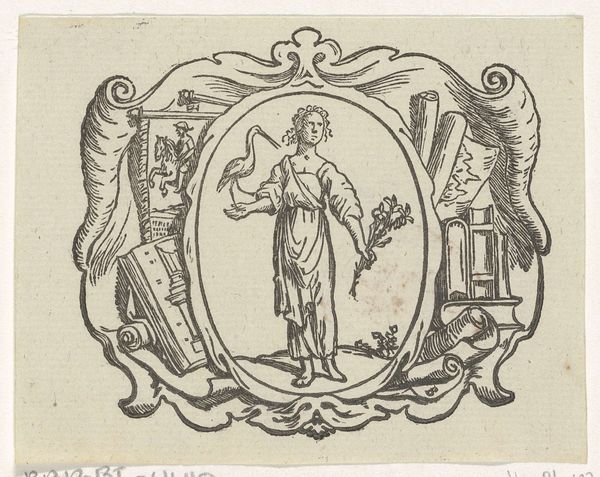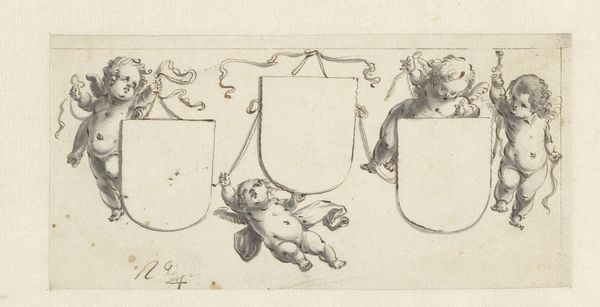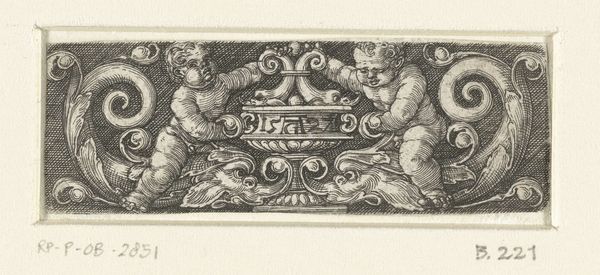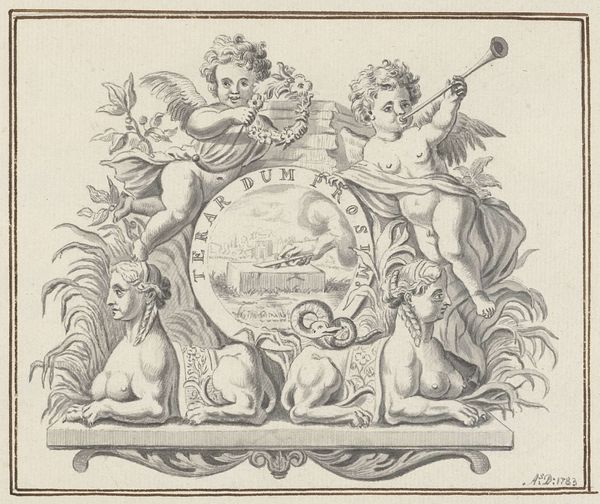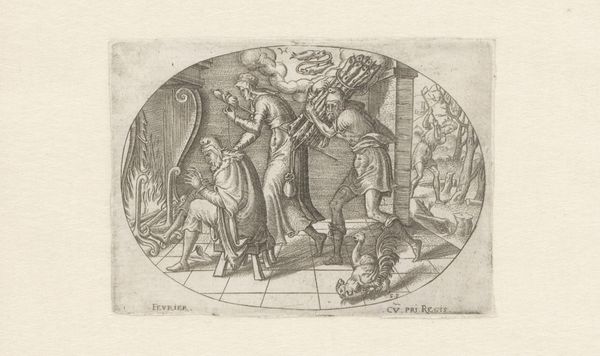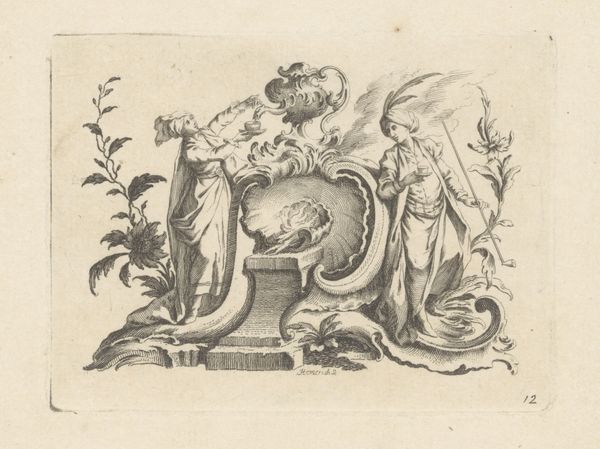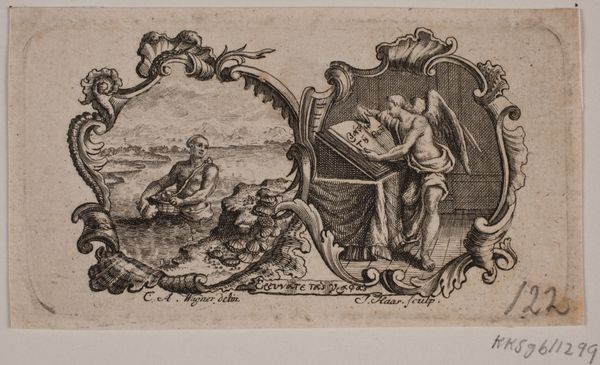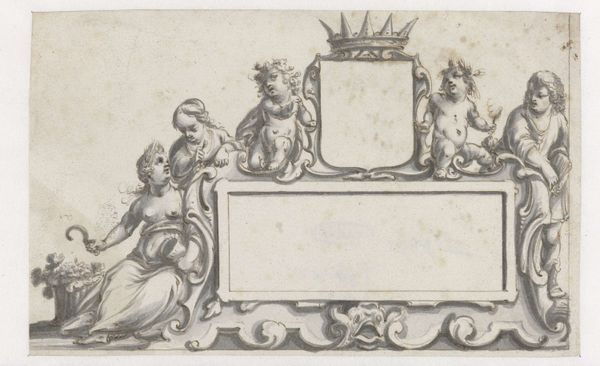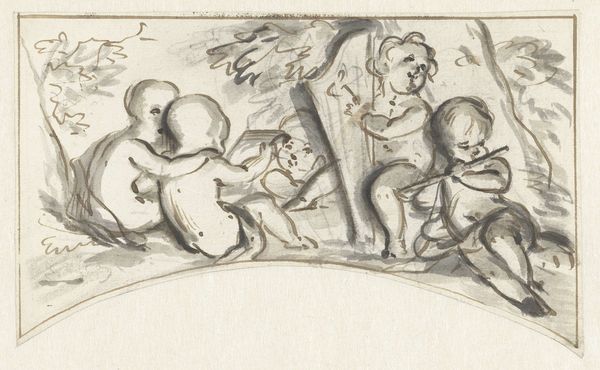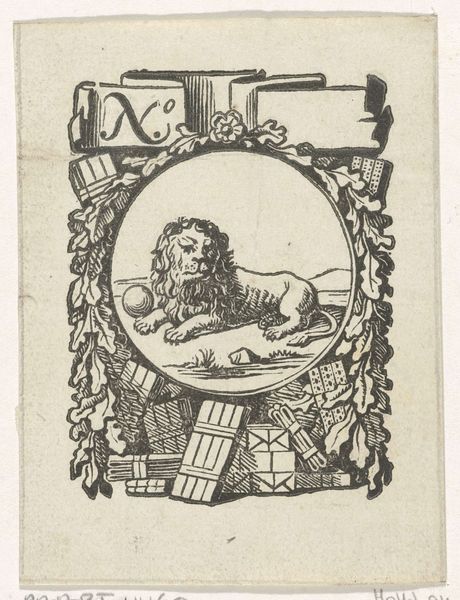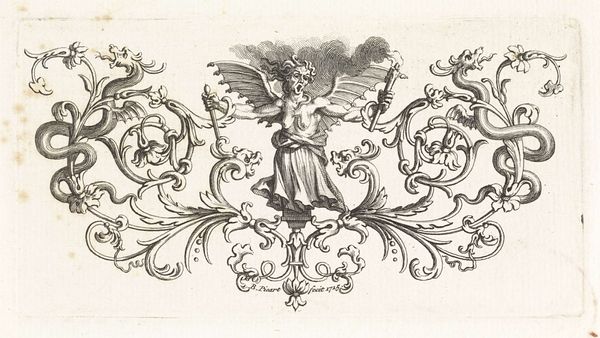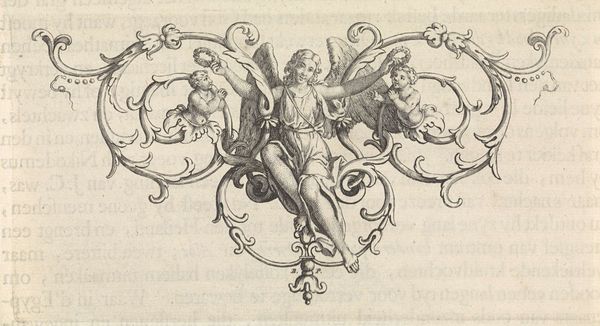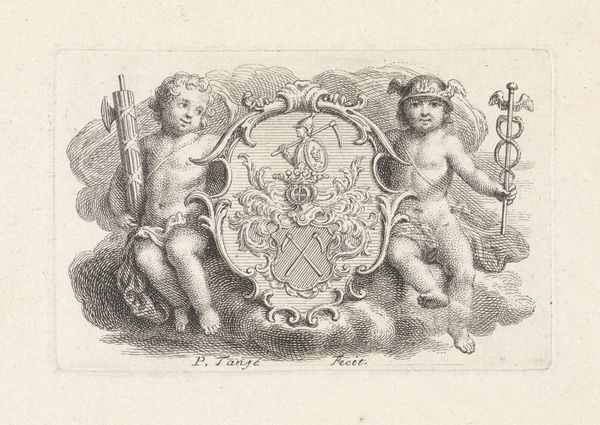
drawing, ink
#
drawing
#
baroque
#
pen sketch
#
ink
#
ink drawing experimentation
#
pen-ink sketch
Dimensions: height 33 mm, width 82 mm
Copyright: Rijks Museum: Open Domain
Curator: This intriguing ink drawing, titled "Vignet met een hartvorm en een kasteel, twee putti en een cherubijn," was created by Dirck de Bray sometime between 1635 and 1694. Editor: It strikes me as almost playful despite being rendered in a single color; the cherubs and heart create an immediate impression of levity. Curator: It is very characteristic of Baroque imagery. Look at how the artist utilizes line and form in this pen-and-ink drawing, giving close attention to how material processes affect reception. Note that the reproductive potential of prints made them useful in spreading propaganda for different audiences. Editor: Yes, observe the contrast—the ethereal cherubs are rendered with delicate, almost fragile lines, whereas the castle is depicted with firmer, more deliberate strokes. This construction evokes the idea of the heavenly versus the earthly realms, united within the symbol of the heart. Curator: Considering de Bray’s social positioning, this symbolic combination probably represented both divine love and tangible, earthly authority of a lord of the castle—an interplay that many viewers might not apprehend these days. Editor: Indeed. We could see it as the convergence of the sacred and the secular within the human heart. Perhaps even hinting at the integration of personal faith and societal structure of the time. Note too that a castle motif would resonate deeply. Curator: Absolutely. The materials here—the paper, the ink—were readily accessible to a growing middle class who were keen on establishing themselves with symbolic imagery that made visual claims of prestige, of status. These objects speak of aspirations. Editor: Examining it now, there's also something fundamentally charming in how De Bray combines what we might consider sacred iconography, cherubs, a heaven-sent-style love, with something far more mundane. Curator: A charming subversion, that makes you question just how devout folks were. Thanks for sharing that wonderful observation, that adds so much meaning for our listeners. Editor: And thank you for enriching my appreciation of this drawing through the prism of material context, the realities of faith and material culture of the 17th century, fascinating stuff.
Comments
No comments
Be the first to comment and join the conversation on the ultimate creative platform.
